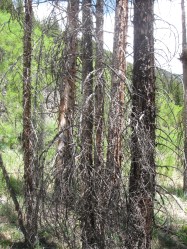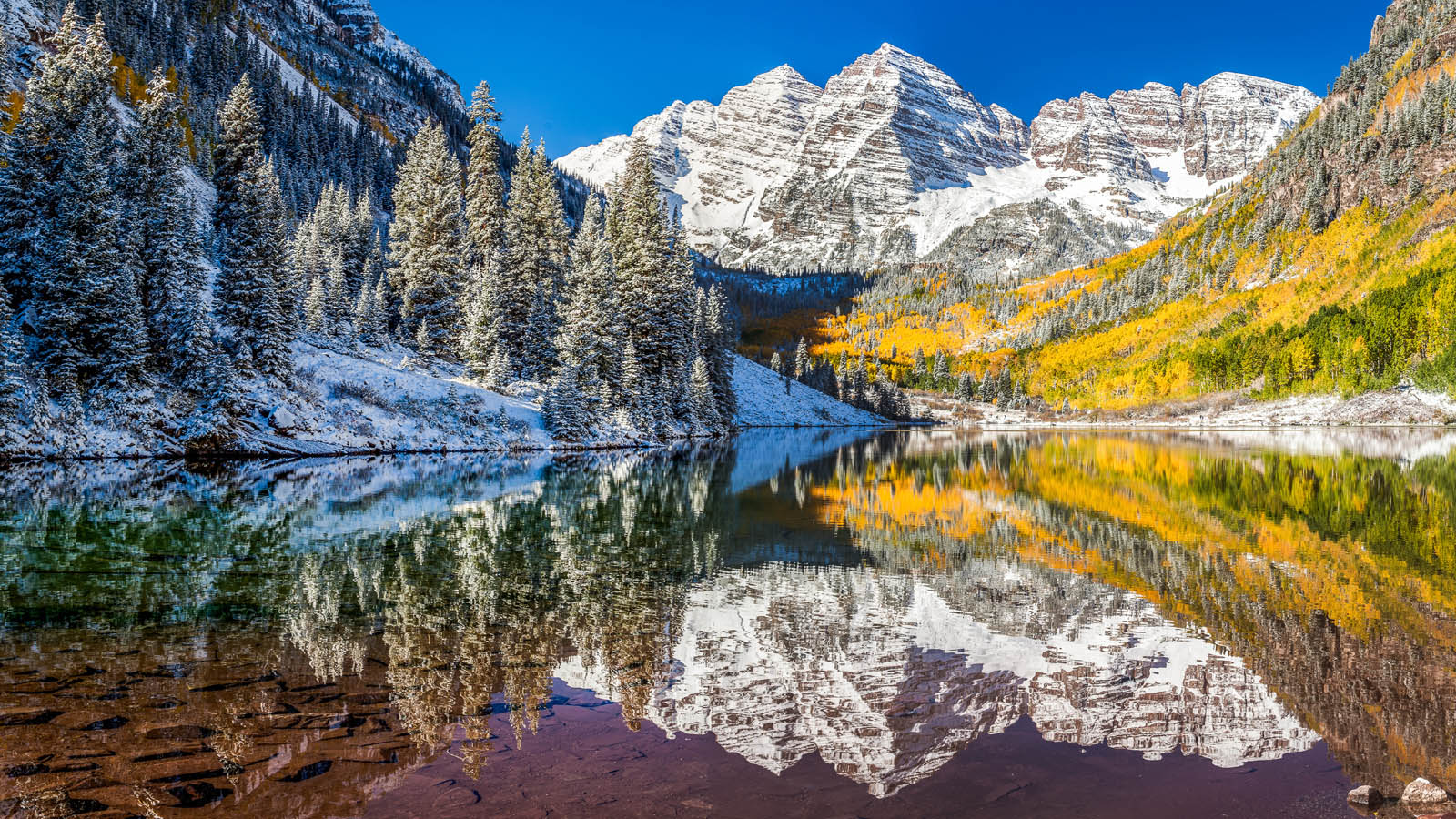Auden Schendler doesn’t seem like a worrywart. Tan, fit, blond, and perpetually smiling, he has the typical manner of a resident of Colorado’s Roaring Fork Valley: relaxed and happy. Who wouldn’t be, living high up in the gorgeous Rocky Mountains with great hiking, biking, and skiing, surprisingly good restaurants, lots of tasty microbrews on tap at the local bars, high-quality mass transit, and legal pot?
This valley, historically home to a string of mining towns, has prospered in recent decades thanks to Aspen’s boom as a vacation and second-home destination. But places where the economy depends on visitors looking for fun in the sun are especially vulnerable to climate change. Skiing, of course, requires snow, and warmer temperatures can reduce snowpack. Meanwhile Aspen’s scenic mountains are under numerous other threats from climate change. Schendler, as vice president of sustainability at Aspen Skiing Company, which manages skiing on the major mountains in the area, is in charge of trying to stave off destruction of the area’s natural beauty, and the loss of business it would cause. (He is also an occasional contributor to Grist.)
The mountain peaks around Aspen are so high that some are still capped with snow in late June, even as the midday temperatures in town reach 80 degrees. Looking at them this summer, though, you notice that they are often covered with a layer of reddish brown dust. This is a new, and very unattractive, phenomenon. The epic drought in the Southwest is sending dust clouds northward. Another contributor to the problem is the clearing out of greenery that holds down soil; it started with ranching, and accelerated recently because of the local fracking boom. Wind then brings the dust all the way up to the mountaintops. “Since 2010 there has been five times as much dust because of construction of dirt roads for oil and gas development,” says Jamie Cundiff, forest program director at the Aspen Center for Environmental Studies. The dust does more than just look bad. By making snow less reflective, dust increases its heat absorption, causing the snow to melt faster. “You see a spike in runoff when the snow melt hits a dust layer,” notes Cundiff.

Trees killed by bark beetles.
Climate change is already affecting the region in other ways too. Trees, including the aspens from which the town takes its name, are threatened by increasing wildfires and invasive species. Drive up to the Continental Divide, and you can see areas along the way where trees have been decimated by fires, which are becoming more prevalent because of hotter and drier conditions. There are also pockets of trees that have been denuded by pine bark beetle infestation. The beetles are migrating northward and to higher elevations thanks to warmer temperatures, and they are attacking pine forests in Colorado. Pine trees naturally fight off the beetles by releasing sap to smother them. But that requires a lot of water, and trees cannot defend themselves when they are dried out by droughts or heat waves. On Aspen Mountain, you can see Engelmann spruce trees suffering from spruce broom rust, a similar condition. “Trees facing environmental stressors such as drought are more susceptible to all kinds of insect and disease infestations,” says Cundiff.
Climate change is not the only way that humans have made trees more vulnerable to invasive species. A healthy forest has a diversity of tree species and tree ages. Pine bark beetles cannot fly, and if pines are interspersed with other species, beetles will not be able to take down a whole forest. But in places where logging has occurred, trees are replanted in neat rows, all the same species and all the same age, making them a perfect target for insects.
Losing either the snow or the trees would threaten to reduce the numbers of tourists who come to hike or ski. But Schendler says the threat to his company’s business is broader than that. “Just the general instability and disruption [caused by climate change] is a problem for us,” says Schendler. People fly to Aspen from all around the country, but they can’t do that when a disaster at their doorstep like Hurricane Sandy shuts down their local airport. And storms can threaten access to ski resorts in other ways. A year before Sandy, Tropical Storm Irene washed out the access road to ski resorts in Vermont, closing them for weeks.
Aspen is not the only area with a tourist-dependent economy under threat from climate change, of course. Warmer temperatures could devastate other ski towns. Throughout the Rocky Mountains, invasive species and wildfires that kill trees could ruin the hiking and hunting that draw visitors. Drier weather threatens the water supply to resort towns throughout the Southwest, such as California’s Catalina Island. Las Vegas and other outposts in the desert are especially vulnerable to extreme heat and droughts. Barrier beaches all over the East Coast have been battered by severe hurricanes. And the two American cities most vulnerable to tropical storms, Miami and New Orleans, are also major tourist destinations.
In all of these regions, some tourism-dependent companies are taking steps to lessen their environmental impact. But the Aspen Skiing Company has gone further, noting that the usual corporate efforts to combat climate change are inadequate. Merely reducing their own waste or carbon footprint won’t cut it. The only solutions broad enough to stop climate change are political. That’s why Schendler reaches out to politicians and advocates for clean energy policies. Corporations, he argues, should treat addressing climate change as a lobbying priority, the same way they do favorable tax or labor policies, because it’s essential to their bottom line.
Aspen residents may seem carefree, but climate change is giving them something to worry about.



